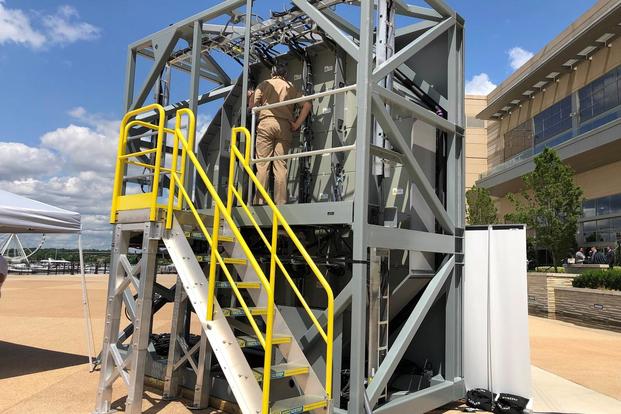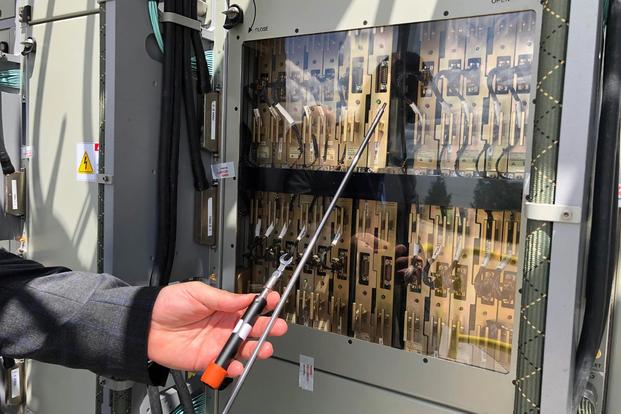It took two cranes and a flatbed truck to deliver it, but sailors and other spectators got an up-close look at the new air- and missile-defense radar being added to Navy ships.
Raytheon's SPY-6 next-generation scalable radar system was on display at this year's Sea-Air-Space expo outside Washington, D.C. The radar was transported from Portsmouth, Rhode Island, and was configured for setup on the Navy's new guided-missile destroyers.
The service recently tested the new system at its Pacific missile range, and the results were "eye watering," said Mike Mills, Raytheon's SPY-6 program director.
"It's 100 times more sensitive than the existing SPY-1. It gives you that much more range, and that means the Navy can counteract that much quicker," he said.
Much of what the system can pick up remains classified, Mills said. But as threats become more complex, they're tougher to detect; SPY-6 can help the Navy keep its edge, he added.
"This radar now is able to give that capability back to the Navy that they're able to track and detect those [threats] as early as possible to combat that," he said. "That's really what it gives the Navy back."
SPY-6 is built using individual 2-square-foot building blocks called Radar Modular Assemblies (RMAs). The one that will be built on the Flight III DDGs is made up of 37 RMAs. Different ships can go smaller with 24- or nine-block setups.
The Navy's Flight IIA destroyers will receive the 24-block model to help keep those ships in the fight.
Since the service plans to use this radar technology for the next 40 years, Raytheon built a system that can be updated accordingly.
"As we work with the Navy to identify different threats that they need to guard against, from a software perspective, we can make those changes," said Ian Davis, a Raytheon spokesman.
Each RMA can also be easily removed if it needs to be repaired or replaced. That is good news for maintainers who work on the older SPY-1 system, which requires a lot of tuning in order to maintain its performance, Mills said.
"Here, it's already tuned when we send it out into the fleet," he said. "If they ... do any replacement, they just need two tools. Since there's a lot of tooling involved in the legacy [system], that was something we looked at when developing this, to make it really low maintenance and really easy for sailors."
Raytheon has started delivering its new systems to the shipyards working on below-deck equipment for the first of the Flight III DDGs currently under construction, Mills said.
-- Gina Harkins can be reached at gina.harkins@military.com. Follow her on Twitter @ginaaharkins.















